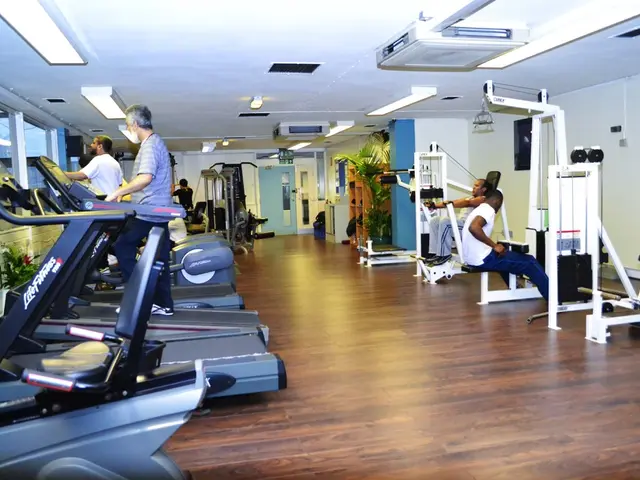Mobility Aids Selection: Distinguishing Between Walkers and Canes for Optimal Use
Growing older or living with disabilities can mean dealing with a range of mobility challenges. From managing chronic conditions to recovering from surgery, assistive devices like canes and walkers can make all the difference. This article offers guidance on choosing the right device for you or a loved one.
Every year, about 1 in 4 older adults faces the challenge of falling, with falls causing significant injuries to muscles and bones [1]. Fortunately, assistive devices are available to help minimize the risk of falls and preserve independence.
Canes and walkers are popular choices for those dealing with some degree of mobility issues, as both devices provide essential support for navigating daily life. The decision between a cane and a walker depends on several factors, including the level of assistance required and one's personal lifestyle.
Comparing Canes and Walkers
Here's a quick comparison of canes and walkers, highlighting their main advantages and drawbacks [1]:
-helps with balance-adjustable
| Device | Benefits | Drawbacks | Best for | Cost || --- | --- | --- | --- | --- || 1-Legged Cane | - Adjustable for comfort - Helps with balance - Inexpensive | - For minimal weight bearing only - Some may find the handle difficult to grasp | Mild balance issues or mild arthritis of the lower limbs | Around $10-$40 || 3-4 Legged Cane | - Offers greater help with balance than a standard cane - Can bear more weight - Adjustable | - Heavier - More cumbersome - Harder to use on stairs | One-sided muscle weakness (hemiparesis) or more significant issues with balance | Around $15-$40 || Standard Walker | - Stable - Can be foldable | - No wheels - Needs lifting with each step | Conditions affecting the function of the muscles or nerves or for fractures | Around $20-$60 || 2-4 Wheeled Walker (Rollator) | - Easier to move - May have a seat and basket for comfort | - Less stable than standard - Not foldable | Issues affecting the spinal cord or conditions that slow down mobility like heart or lung diseases | Around $35-$100 |
-for minimal weight bearing only-some have a curved handle that some may find difficult to grasp and cause pain, especially for people with joint or muscle conditions
Choosing the Right Device: A Medical Perspective
-mild balance issues-mild to moderate arthritis of the lower limbs
Canes and walkers can be lifesavers for individuals dealing with chronic conditions or recovering from injuries. A medical professional can help determine the best device based on specific needs and conditions [2]:
$10-$40
Canes
Canes are ideal for individuals with mild balance issues or weakness on one side of the body. They come in various styles, including single, quad, and four-legged canes. A quart cane, for example, offers extra stability for those with significant weakness or balance impairments but do not need the full support of a walker.
-offers greater help with balance than a standard cane-can bear more weight-adjustable
Walkers
-heavier-more cumbersome-may be harder to use on stairs
Walkers are most suitable for individuals with significant balance or mobility issues that affect both sides of the body. This includes conditions such as advanced stages of Parkinson's disease, multiple sclerosis, or post-stroke recovery. Walker users may experience improved stability, as they can shift part of their body weight onto the device while moving.
-one-sided muscle weakness (hemiparesis) or more significant issues with balance
Making the Best Choice: Lifestyle Factors
$15-$40
Mobility devices should feel user-friendly and accommodate one's lifestyle as much as possible. Here are some factors to consider when choosing between a cane and a walker:
- Apartment or Home Size: Smaller living spaces may benefit from compact solutions like canes, while larger homes or outdoor environments might necessitate the use of a walker.
- Budget: Canes tend to be less expensive than walkers, making them an appealing choice for those on a tight budget.
- Daily Routine: Consider the specific tasks that your mobility device will need to accommodate. For example, a job that requires long walks or a home with stairs might dictate the need for a walker.
-stable-foldable
Conclusion
-no wheels-needs lifting with each step
Navigating life with assistive devices like canes and walkers can help maintain independence and mobility for older adults and individuals with disabilities. By understanding your unique needs and potential conditions that may require a specific device, you can make the best decision for your or your loved one's wellbeing. With a little research and guidance from a healthcare professional, finding the right mobility aid can make all the difference.
-for conditions that affect the function of muscles or nerves or for fractures
Sources:
$20-$60
[1] "Choosing a Cane or Walker" (Medline Plus, 2021) https://medlineplus.gov/ency/patientinstructions/000168.htm
[2] "Cane and Walker" (National Institute on Aging, 2021) https://www.nia.nih.gov/health/cane-and-walker
-easier to move-may have a seat and basket for comfort
[3] "Mobility Assistive Devices: Canes and Walkers" (American Stroke Association, 2021) https://www.stroke.org/en/lifeafterstroke/mobility-assistive-devices-canes-and-walkers
-less stable than standard-not foldable
[4] "Using a Walker" (Mayo Clinic, 2020) https://www.mayoclinic.org/healthy-lifestyle/healthy-aging/in-depth/walker/art-20045502
-issues affecting the spinal cord, conditions that slow down mobility like heart or lung diseases
[5] "Choosing a Walker or Cane" (National Association of Area Agencies on Aging (n4a), 2021) https://www.n4a.org/aging-in-place/home-modifications-and-equipment/home-equipment/choosing-a-walker-or-cane/
$35-$100
[6] "Canes & Crutches" (National Association of Orthopaedic Nurses, 2021) https://www.naononline.org/Library/Resources
![Person caught on camera spray-painting offensive graffiti on public property at night. Local authorities are seeking leads for identification and duly punishing the individual responsible. Unveiled Photograph: Dmitry Vereshchagin/Shutterstock [Showcasing the image]](https://wellfitpulse.top/en/img/20250518000624_image-description-sunset-over-a-mountain-range-clear-sky-golden-hour-landscape-nature-outdoor-travel-scenic-beautiful-serene-peaceful-tranquil-breathtaking-stunning-amazing-awe-inspiring.jpeg)
[7] "The Best Canes for Taller Seniors" (Healthline, 2021) https://www.healthline.com/health/aging/best-canes-for-tall-seniors
[8] "Cane vs. Quad Cane: How to Choose the Right Mobility Aid" (Hampton Roads Orthopaedics and Neurosurgery, 2021) https://www.hromd.com/conditions-treatments/cane-vs-quad-cane/
- With aging and certain health conditions, the risk of falls increases, as about one in four older adults encounter this issue every year [1].
- Assistive devices such as canes and walkers can help mitigate the risk of falls and maintain independence, particularly for those dealing with chronic medical conditions [2].
- Both canes and walkers offer essential support for daily navigation, but the choice between them depends on specific needs, including the level of assistance required, personal lifestyle, and medical conditions [3].
- Canes, available in styles like single, quad, and four-legged versions, are suitable for individuals with mild balance issues, one-sided weakness, or mild arthritis of the lower limbs [4].
- Walkers are more suitable for individuals with significant balance or mobility issues that affect both sides of the body, such as advanced stages of Parkinson's disease, multiple sclerosis, or post-stroke recovery [5].
- Lifestyle factors that may influence the choice between a cane and a walker include space availability, budget, and daily routine [6].
- When making a decision, it's essential to consider the unique needs of the user and to consult with a healthcare professional to determine the best device for overall wellbeing [7].
Sources:[1] Medline Plus, 2021[2] National Institute on Aging, 2021[3] American Stroke Association, 2021[4] Mayo Clinic, 2020[5] National Association of Area Agencies on Aging (n4a), 2021[6] National Association of Orthopaedic Nurses, 2021[7] Healthline, 2021[8] Hampton Roads Orthopaedics and Neurosurgery, 2021








